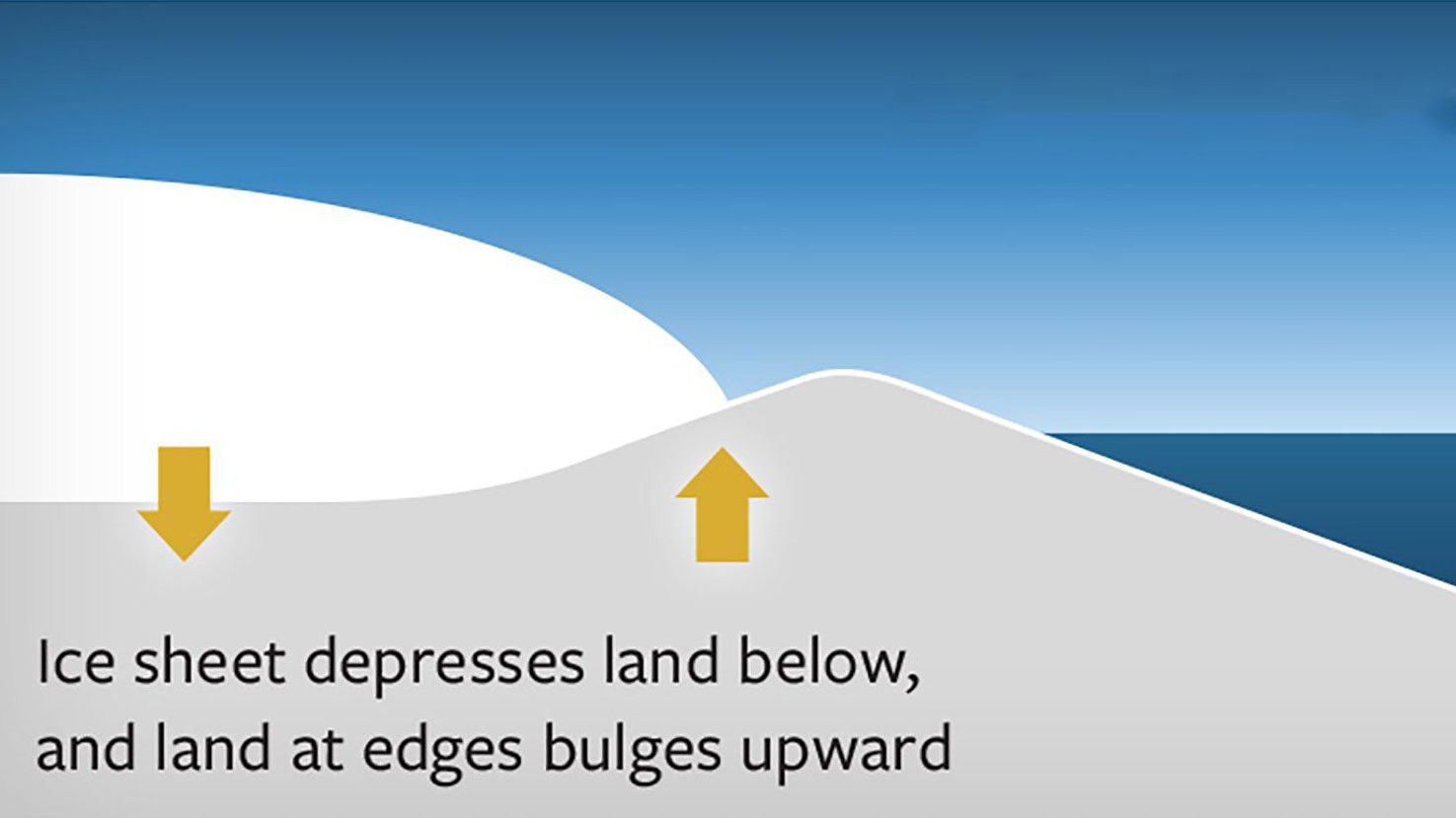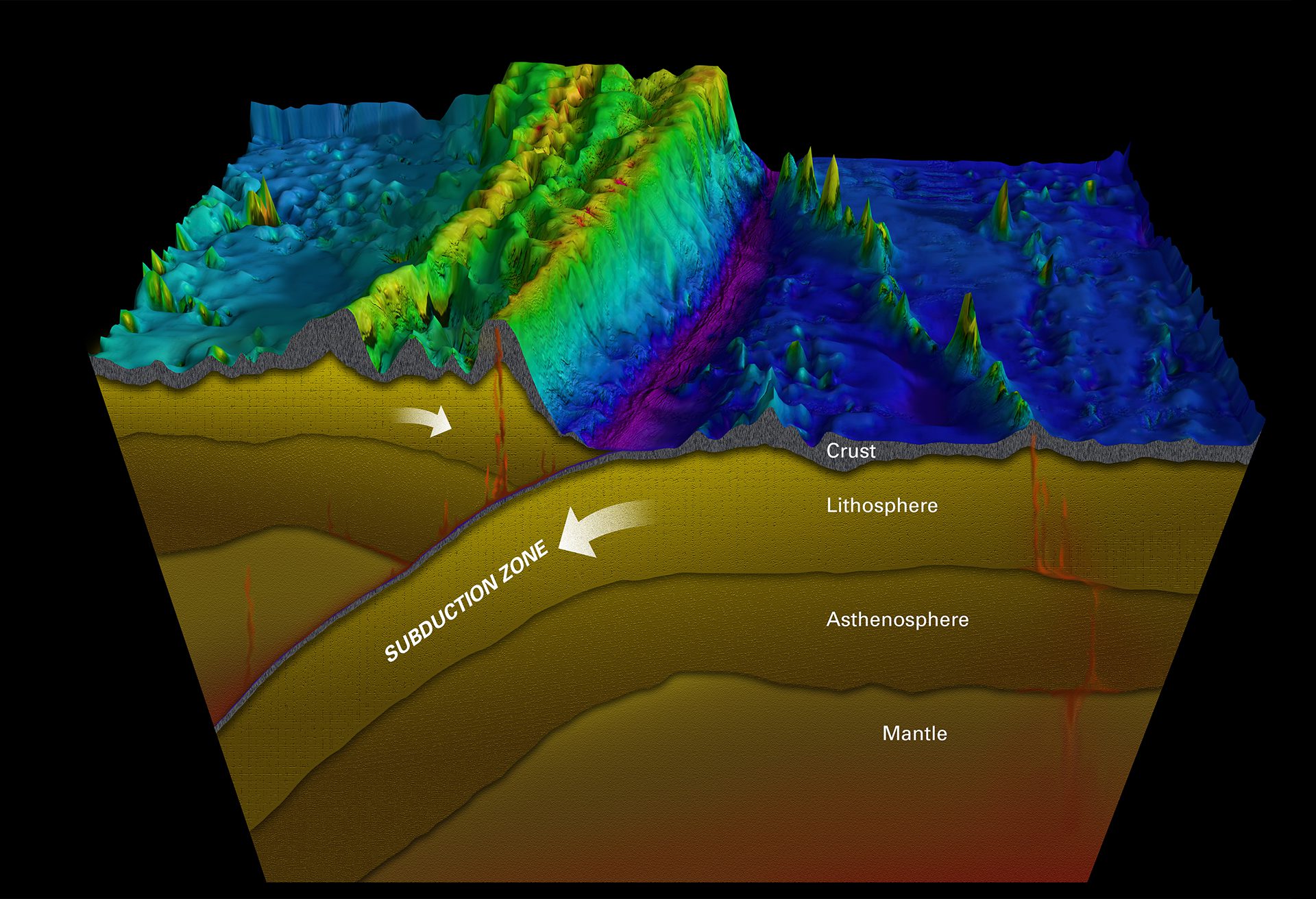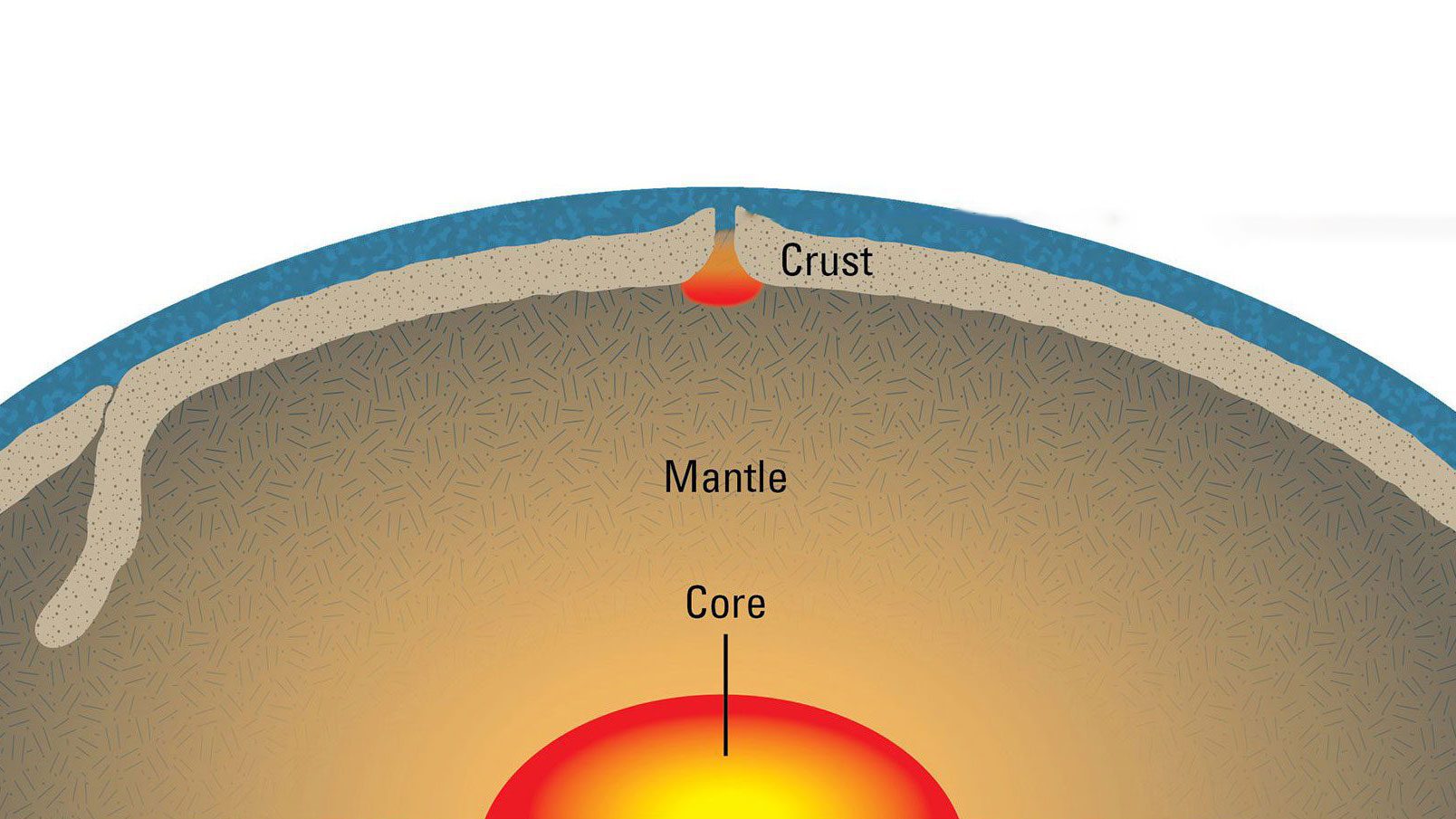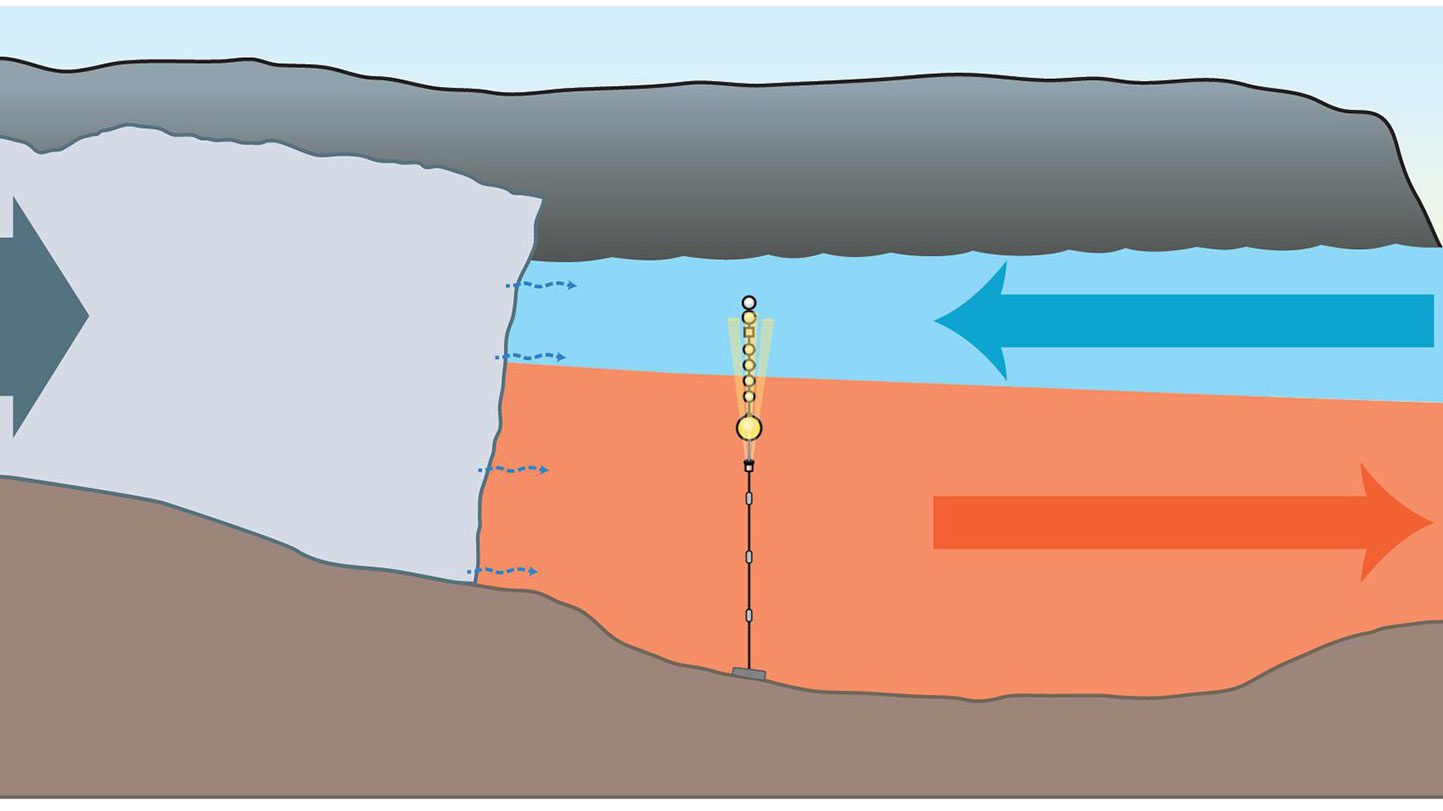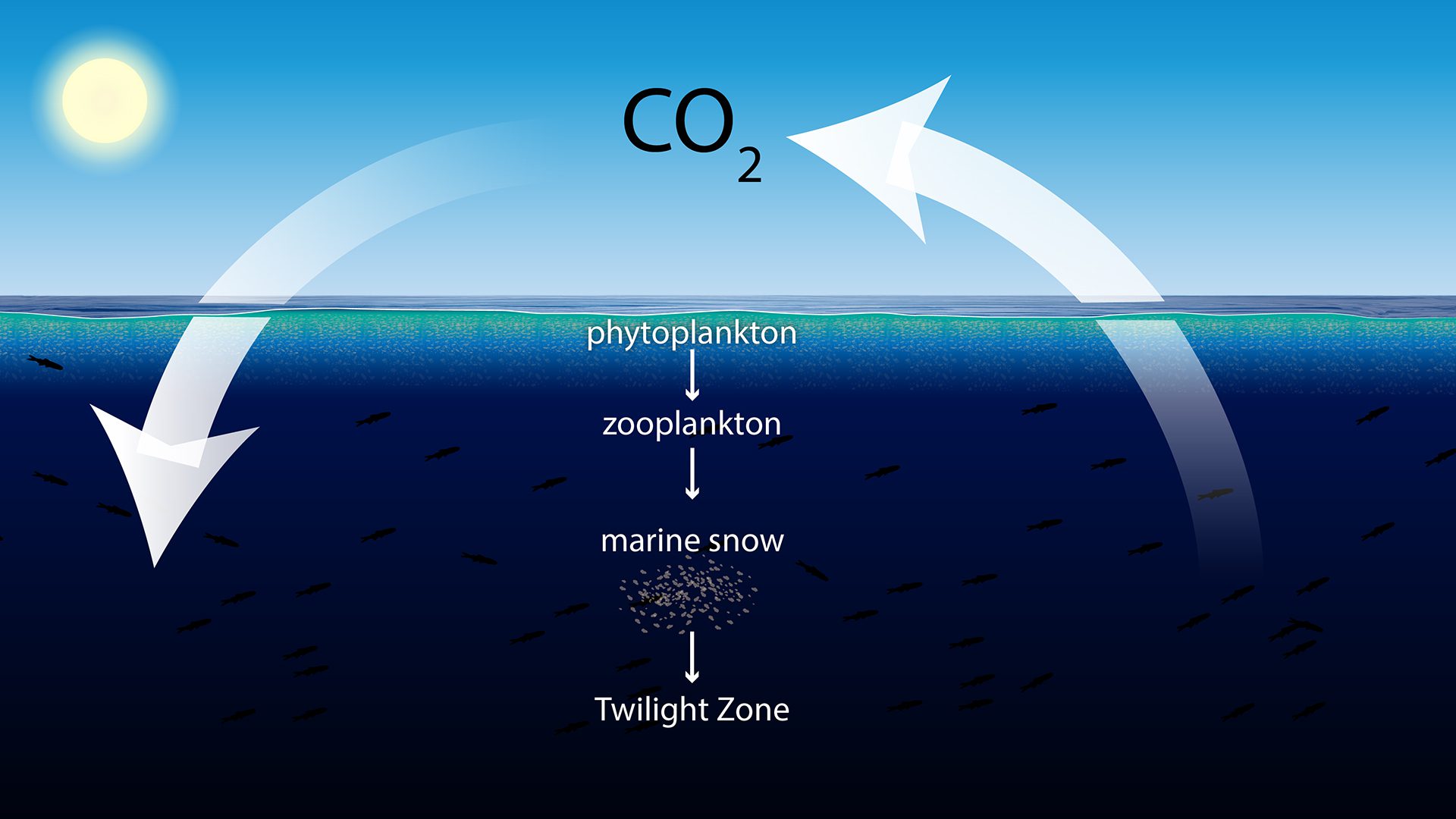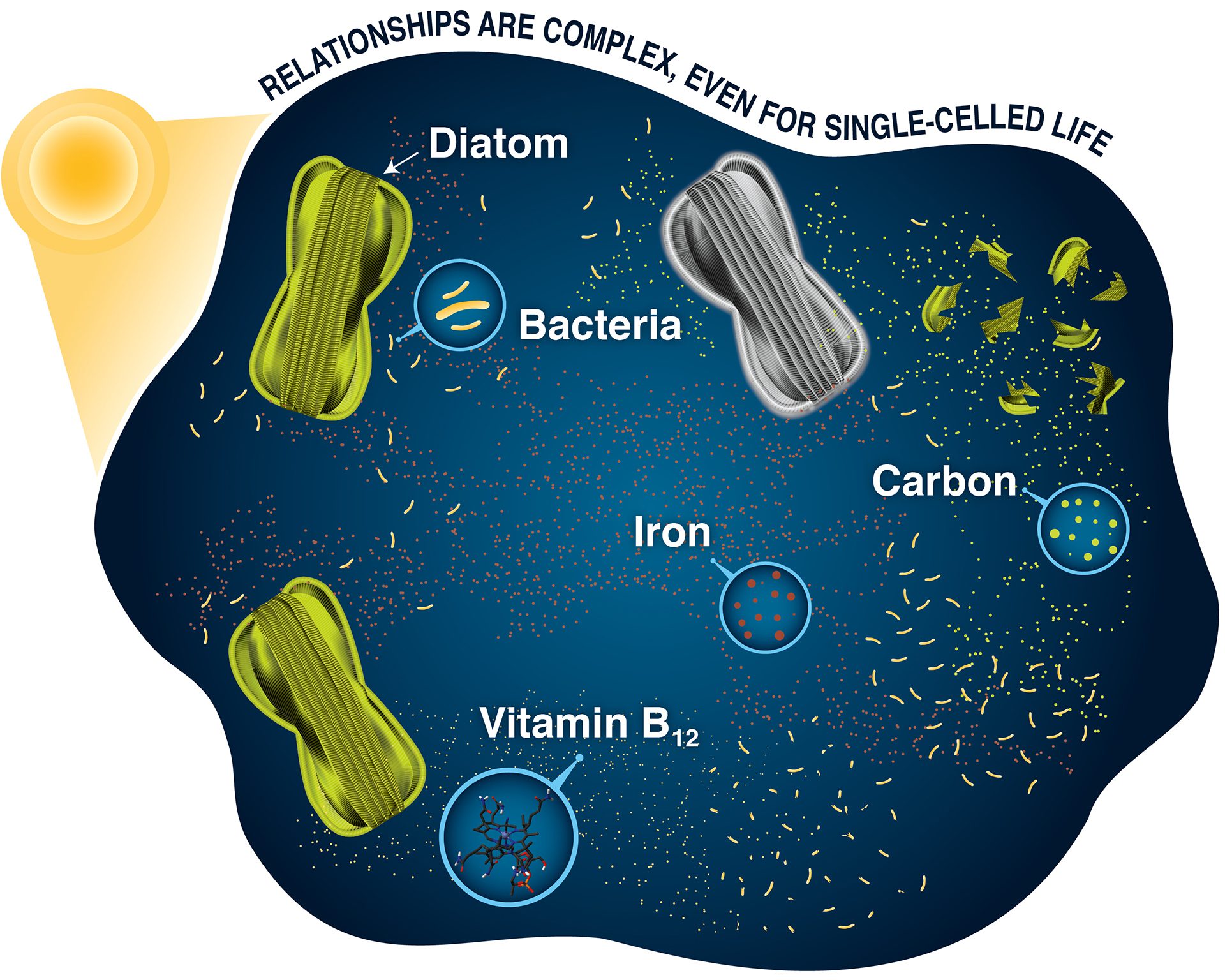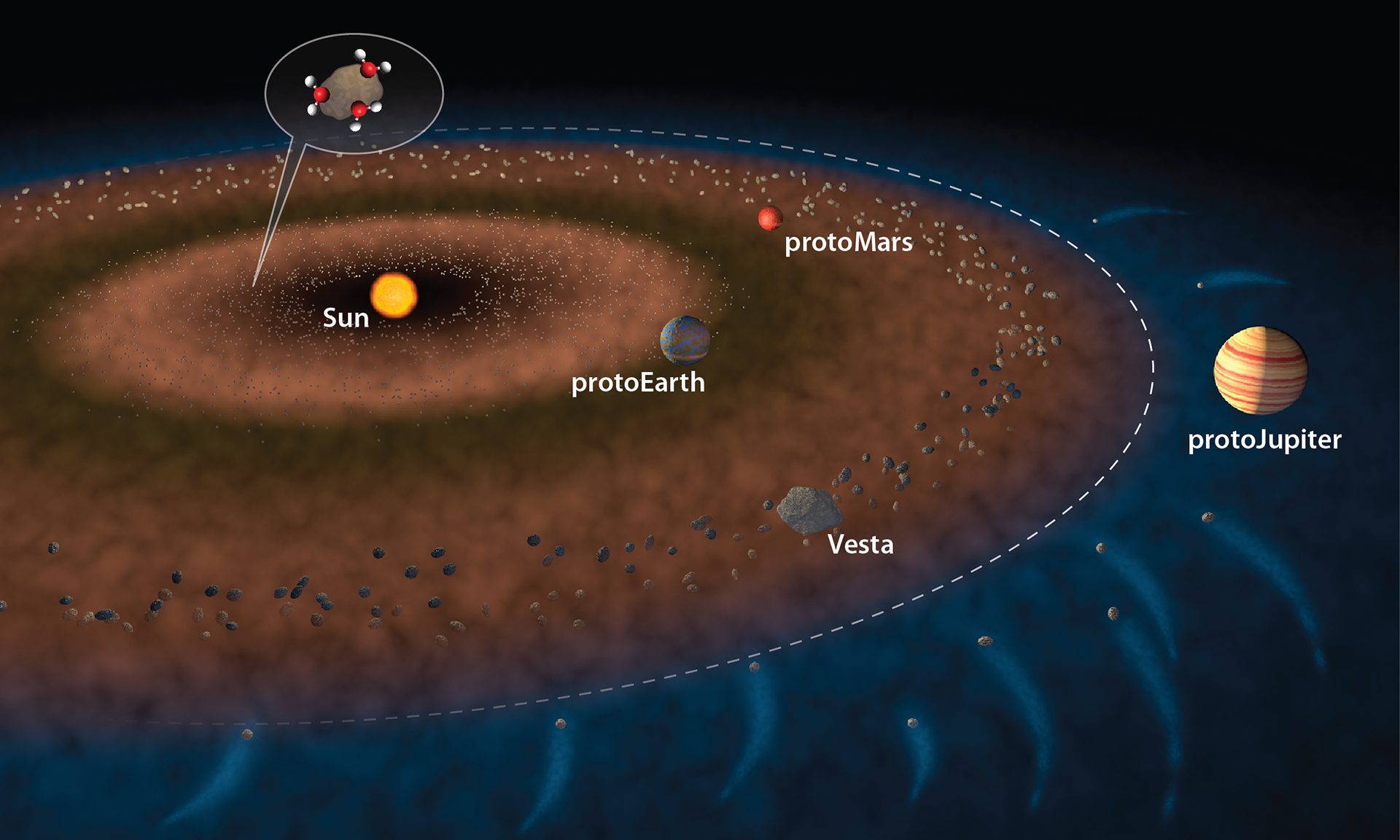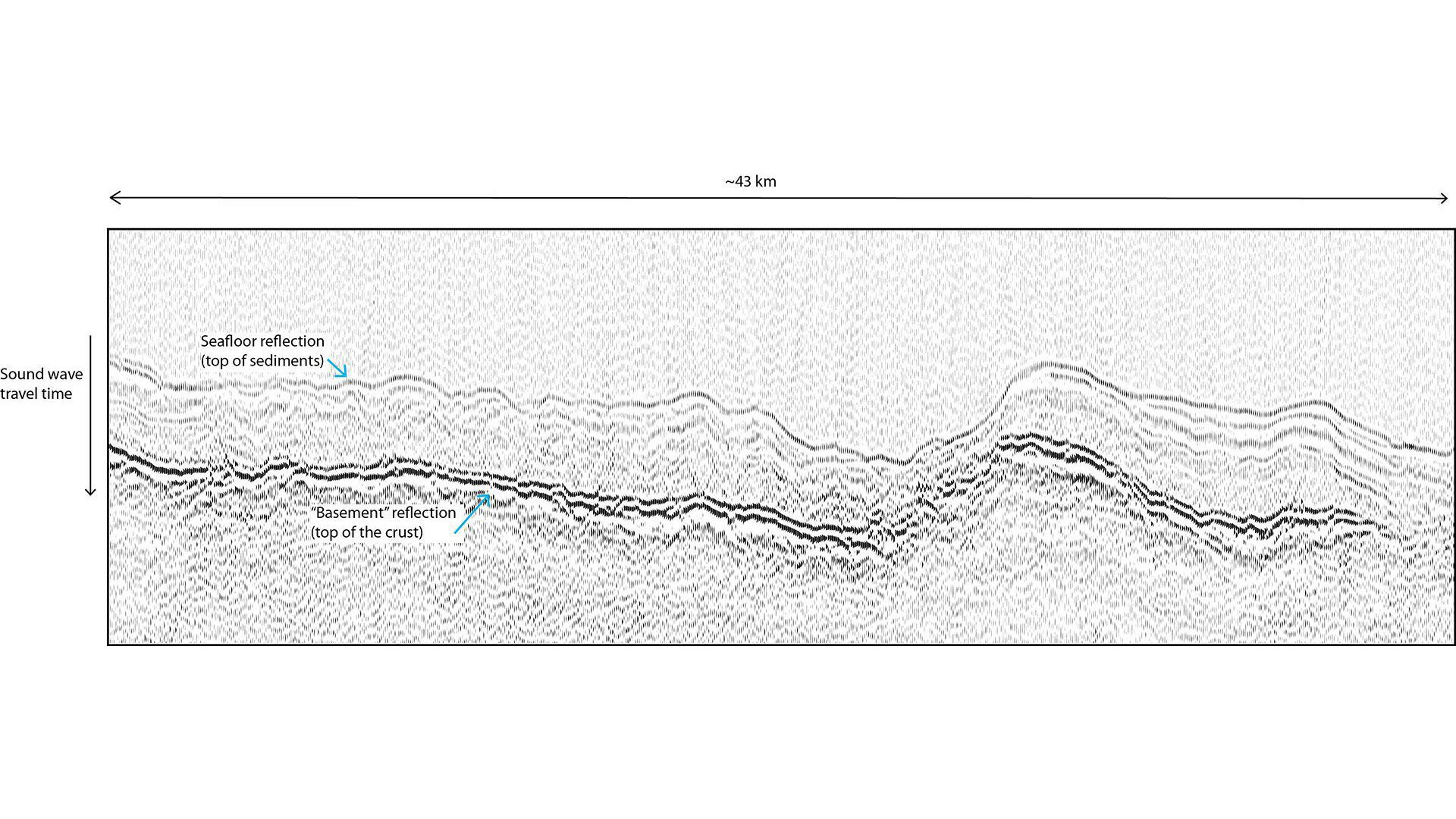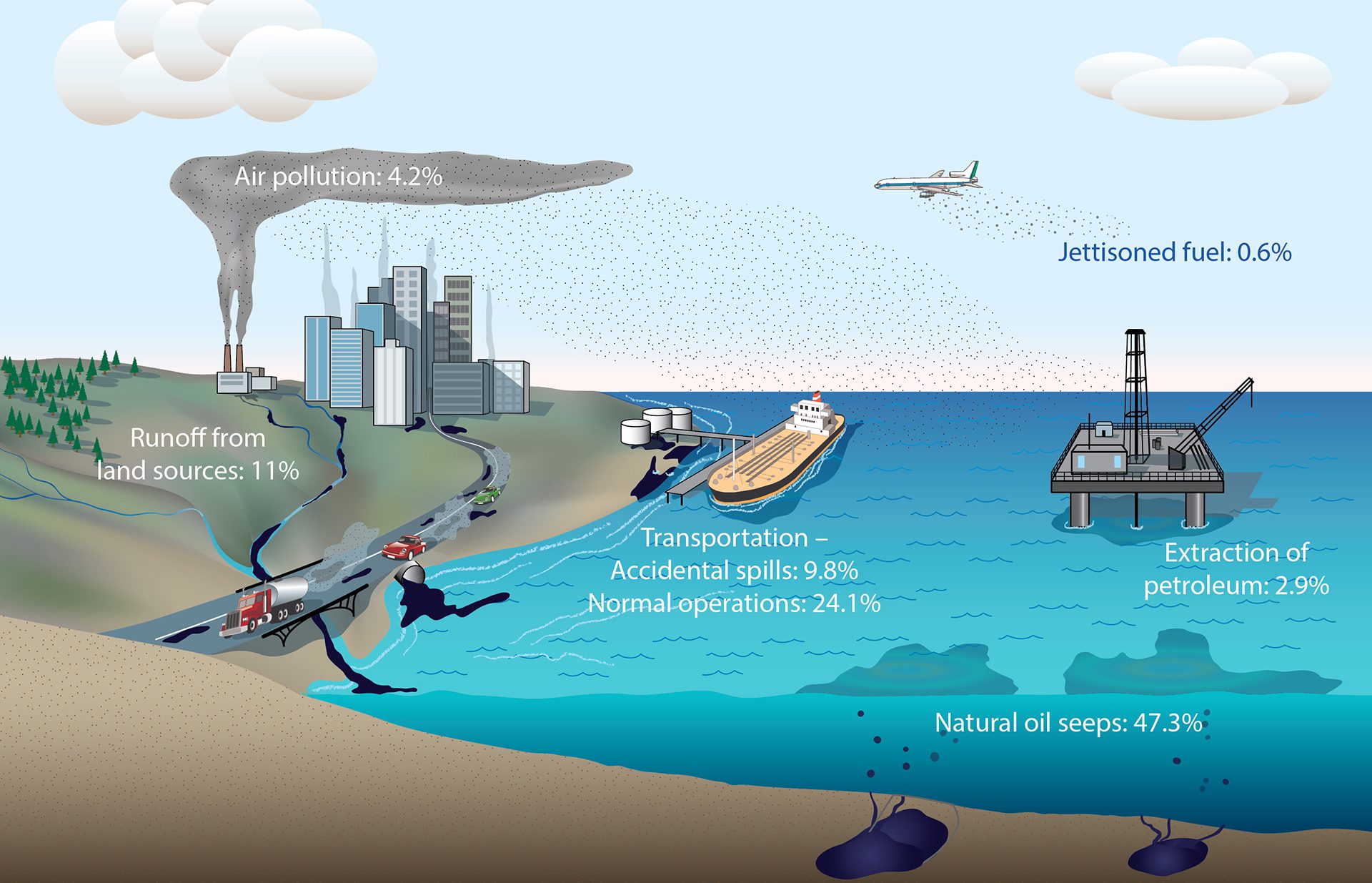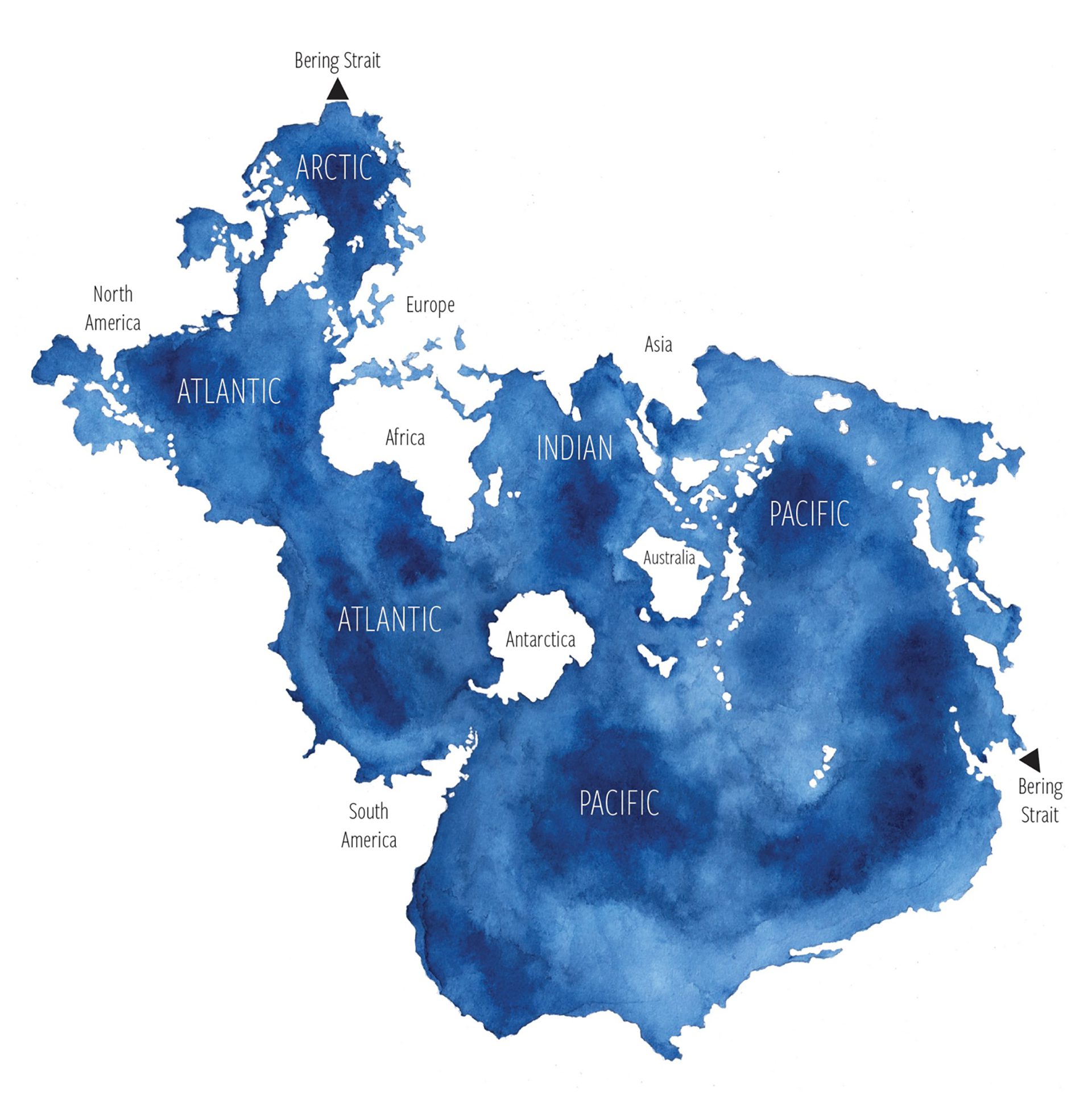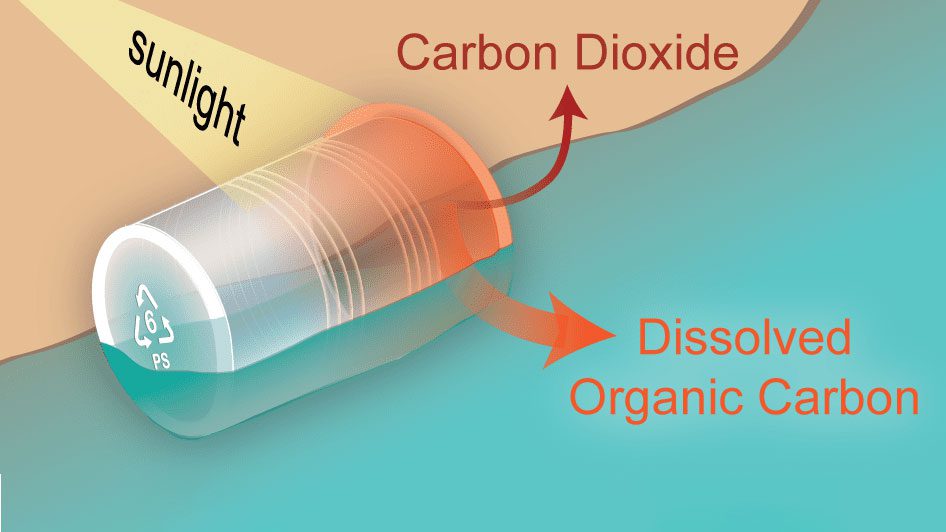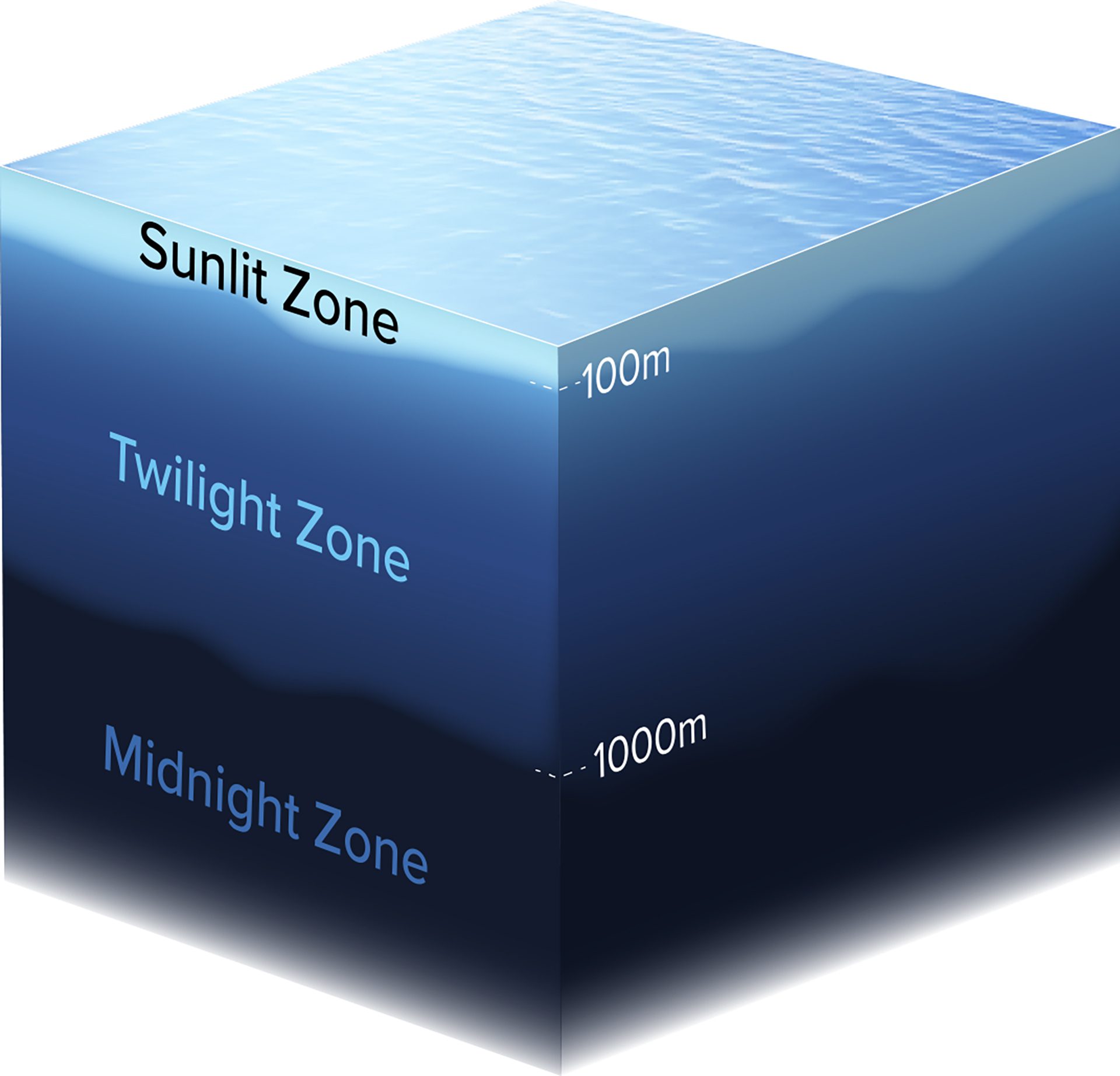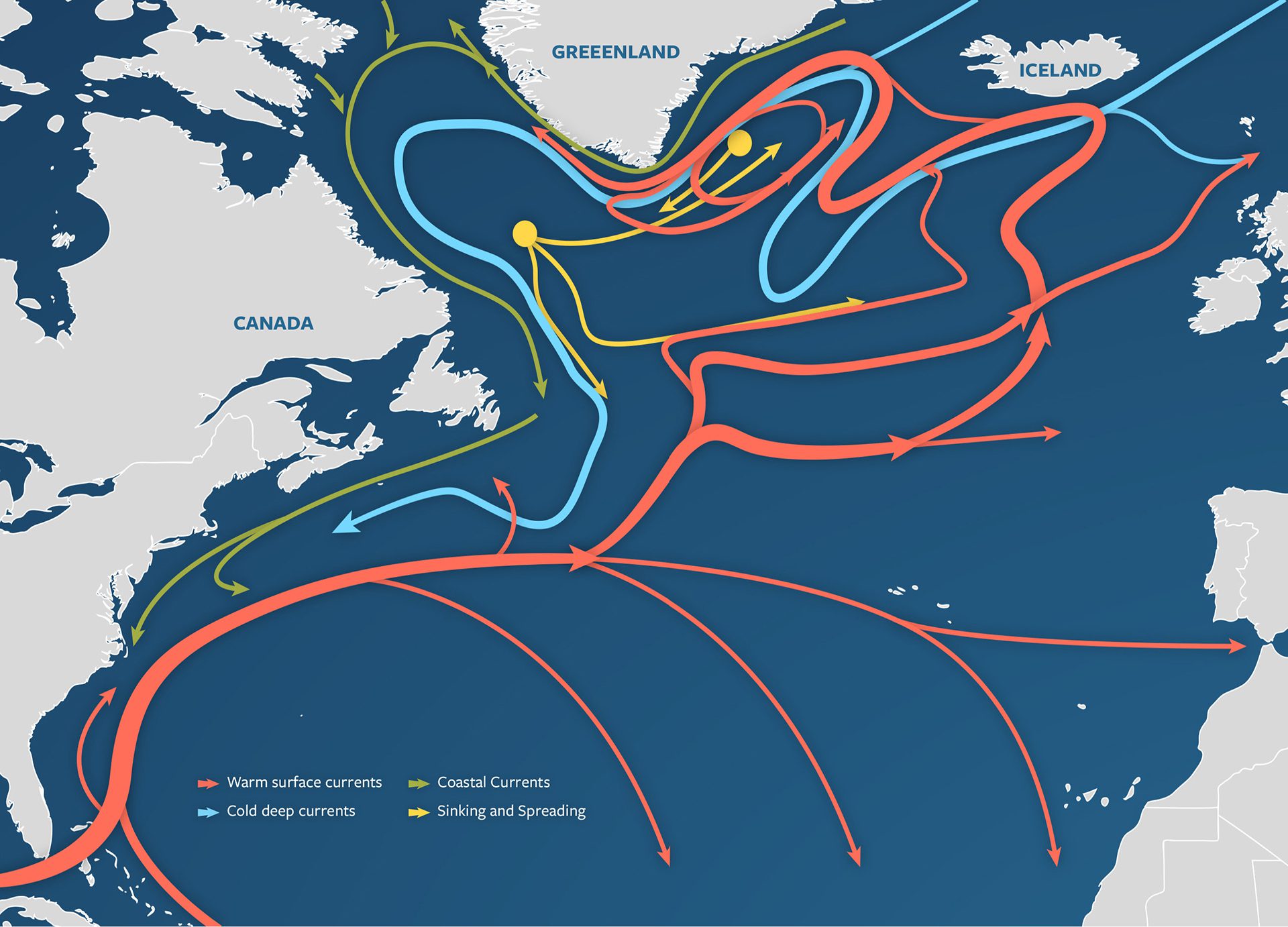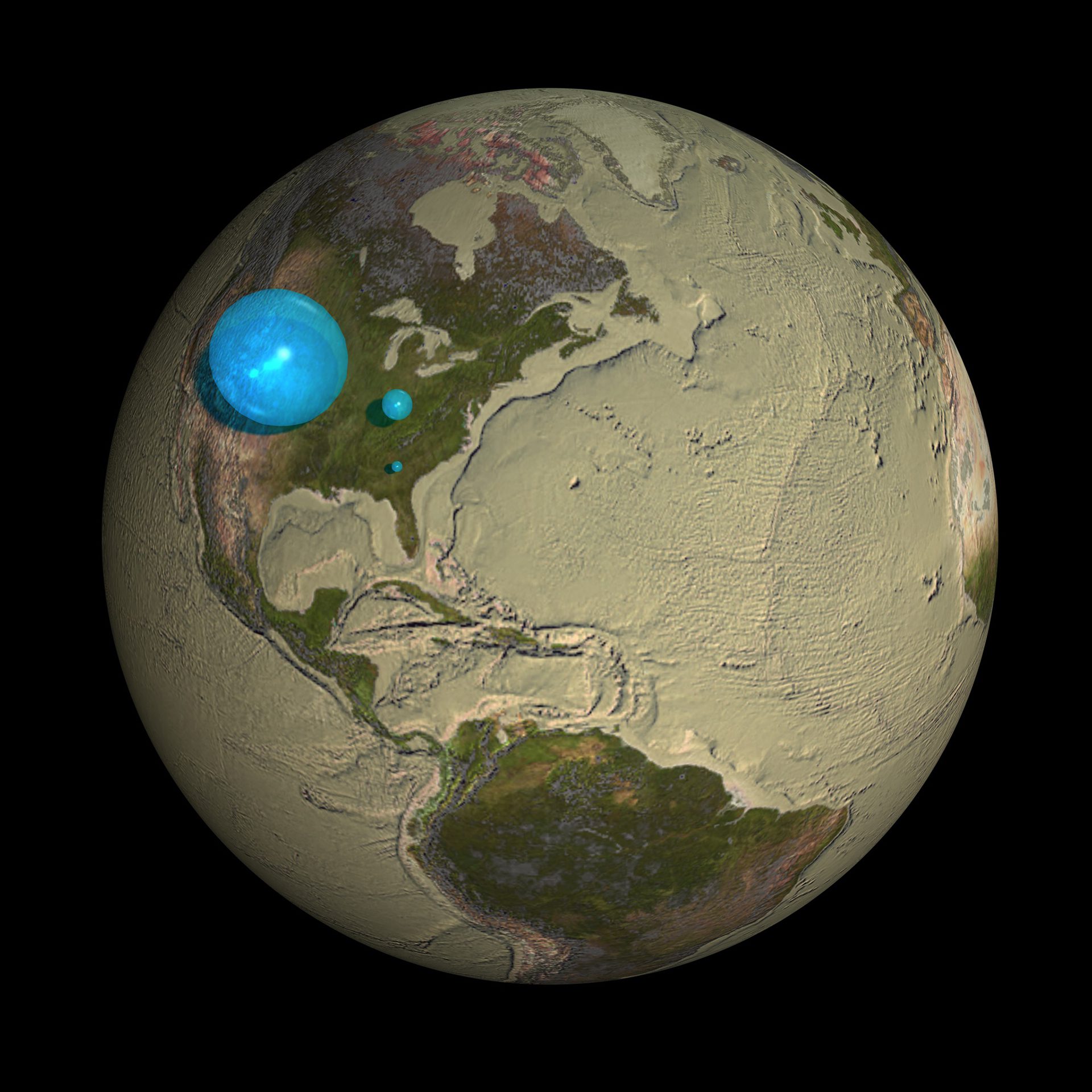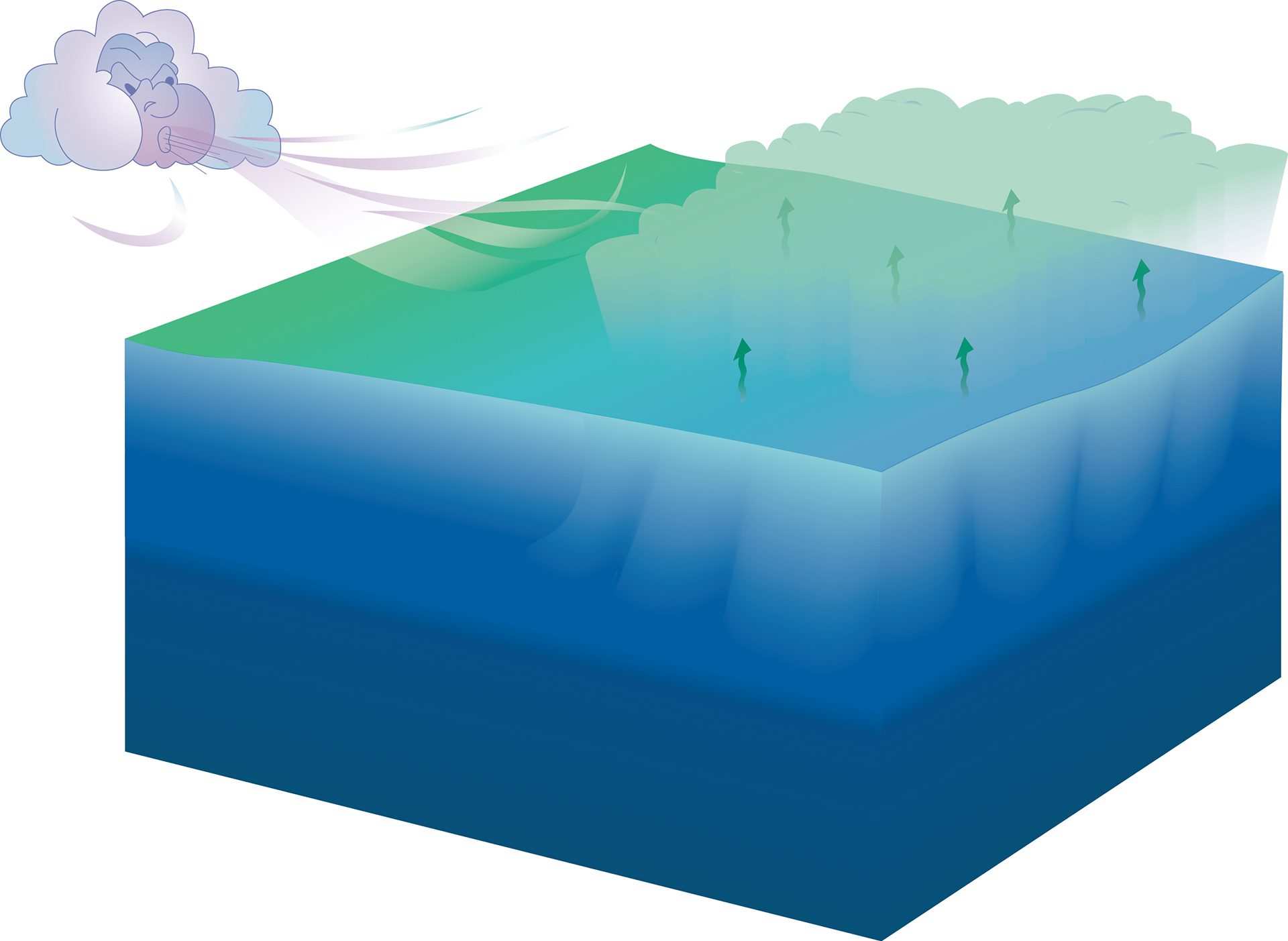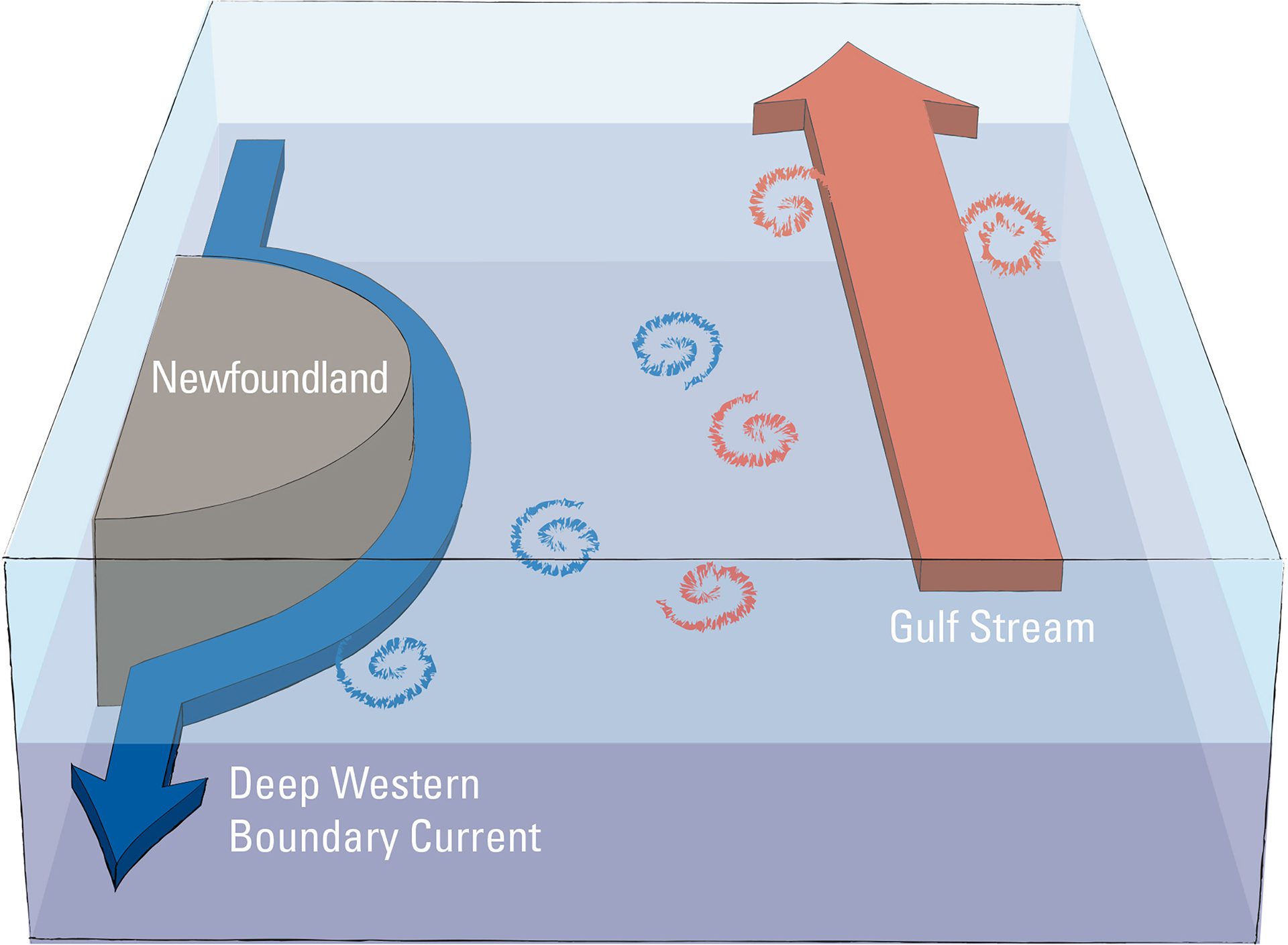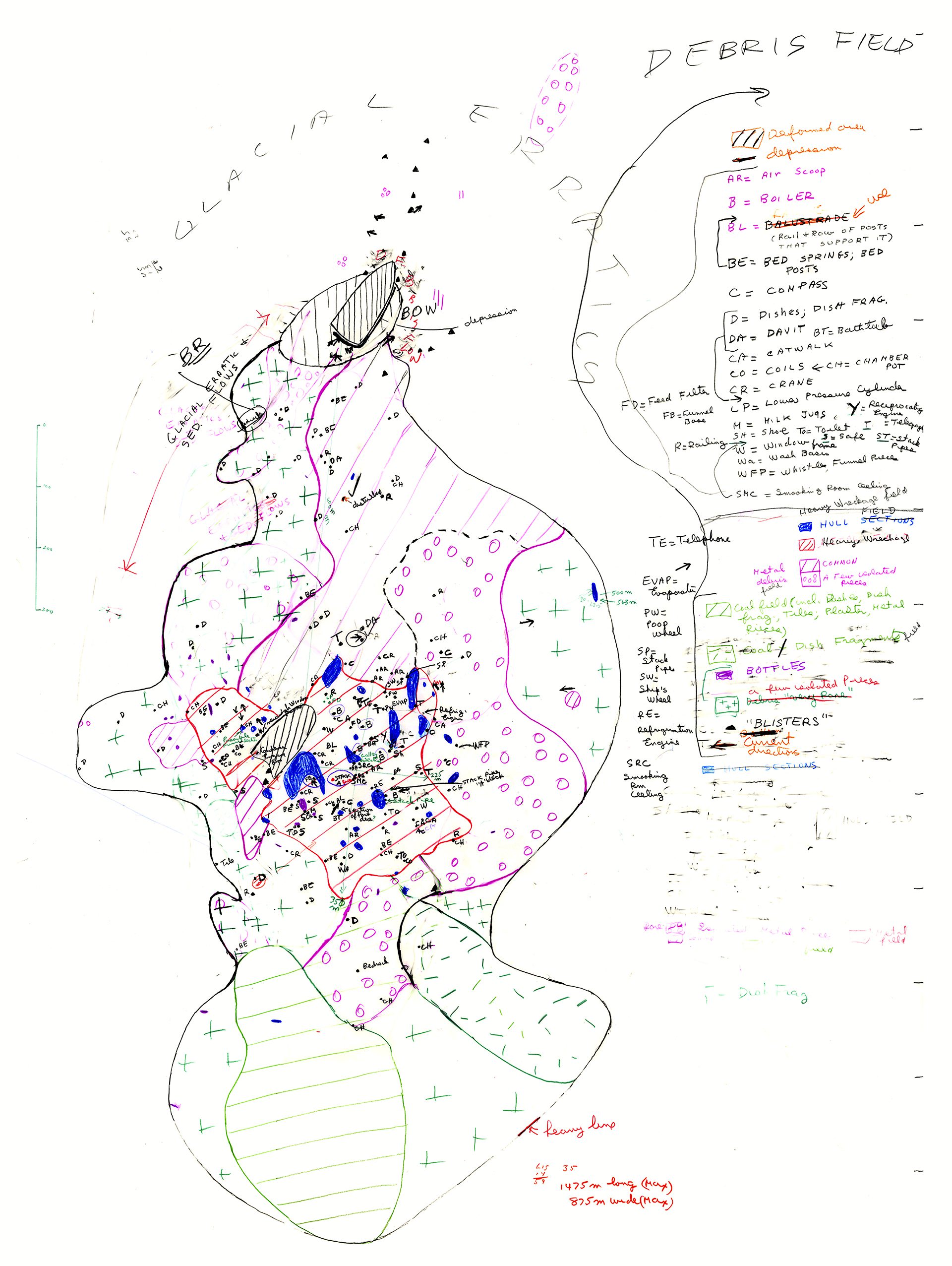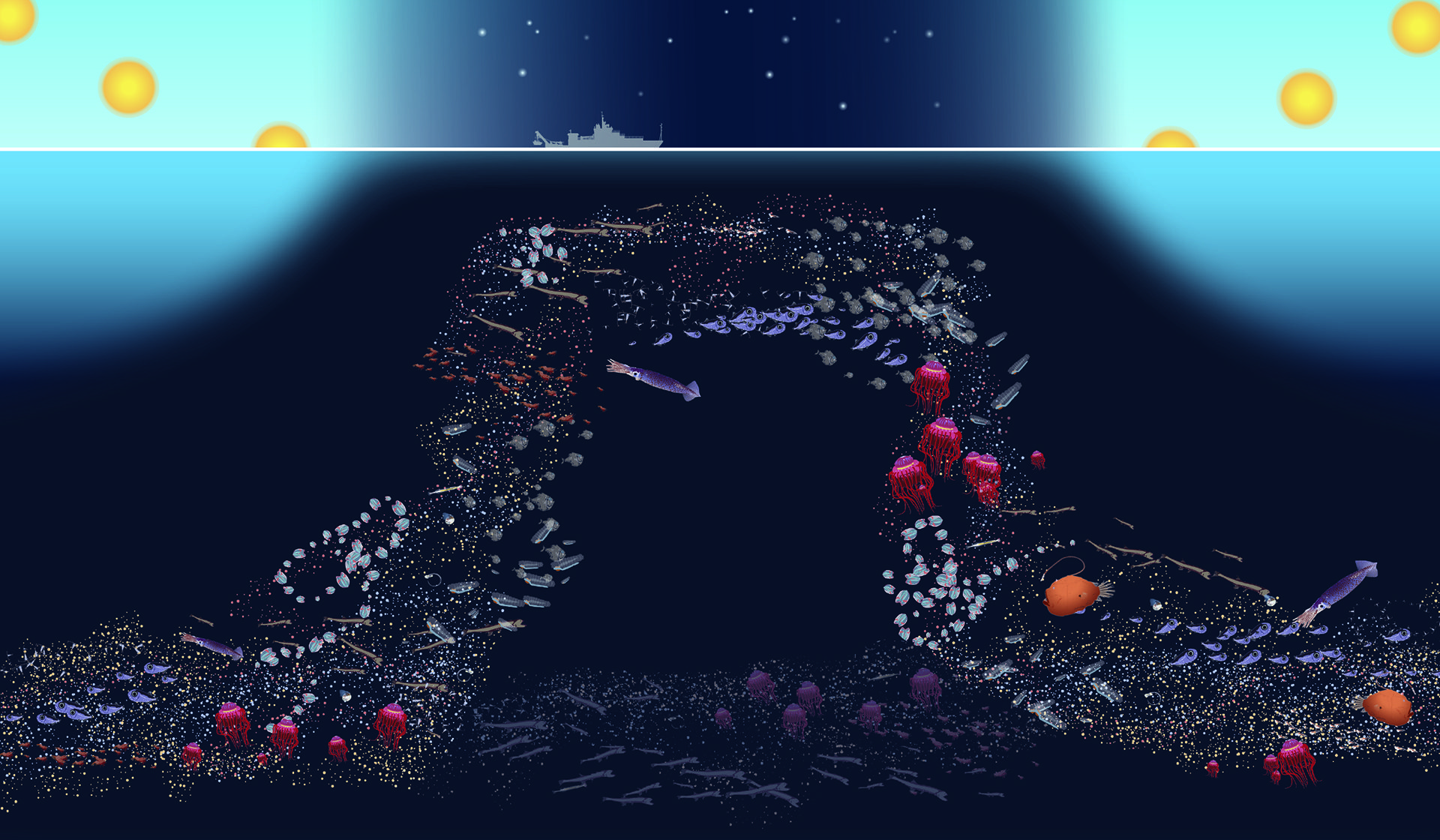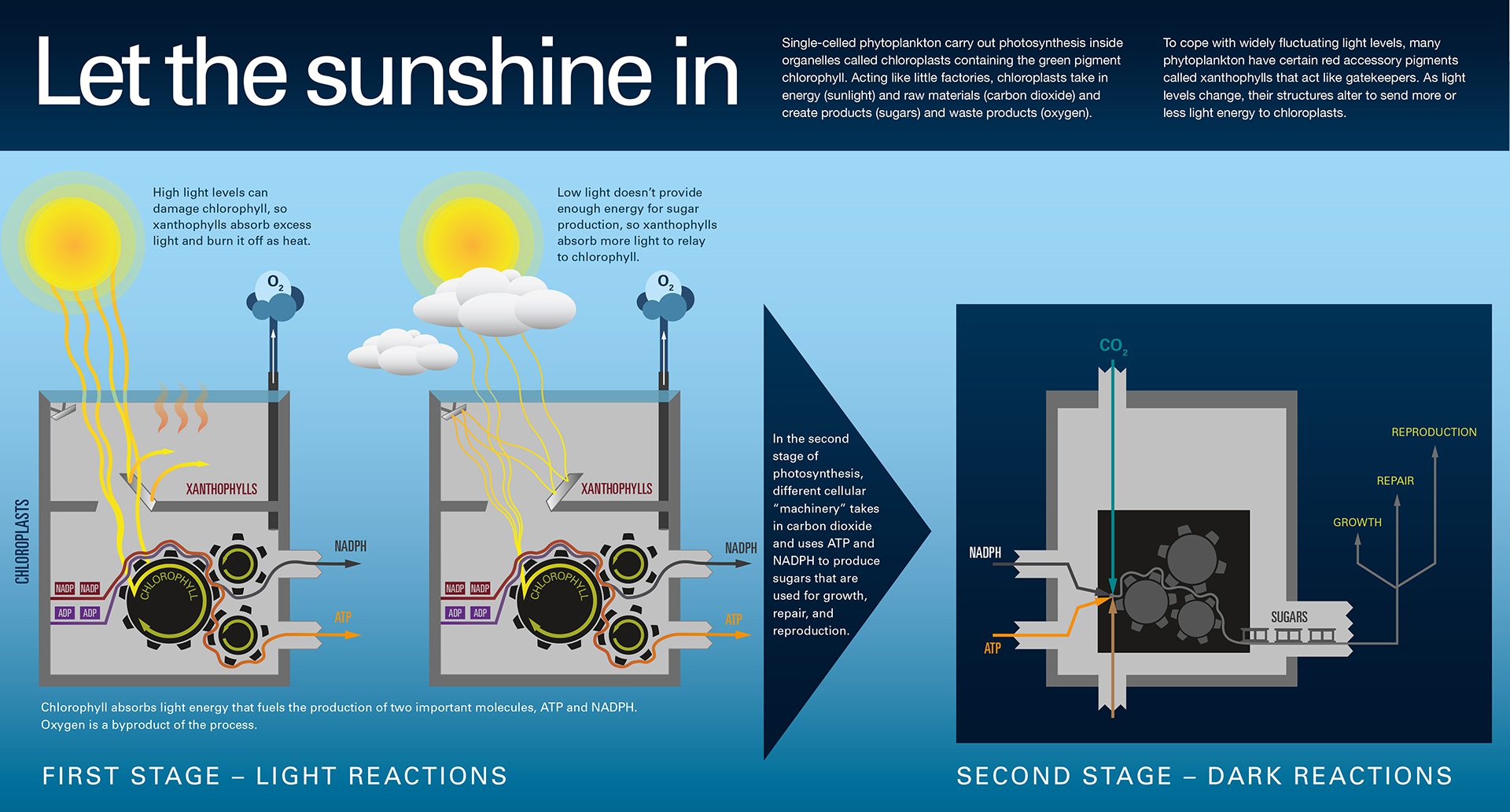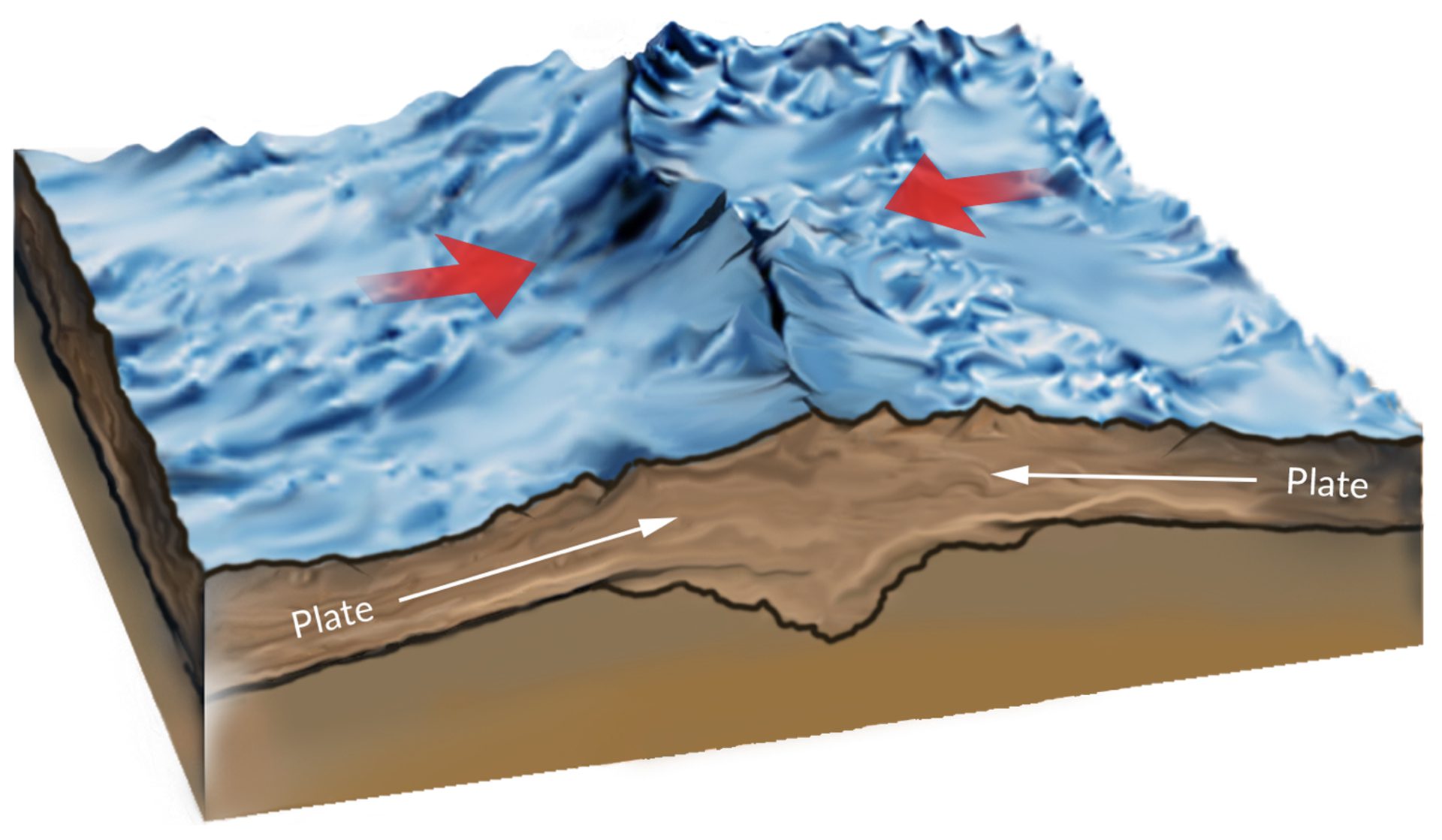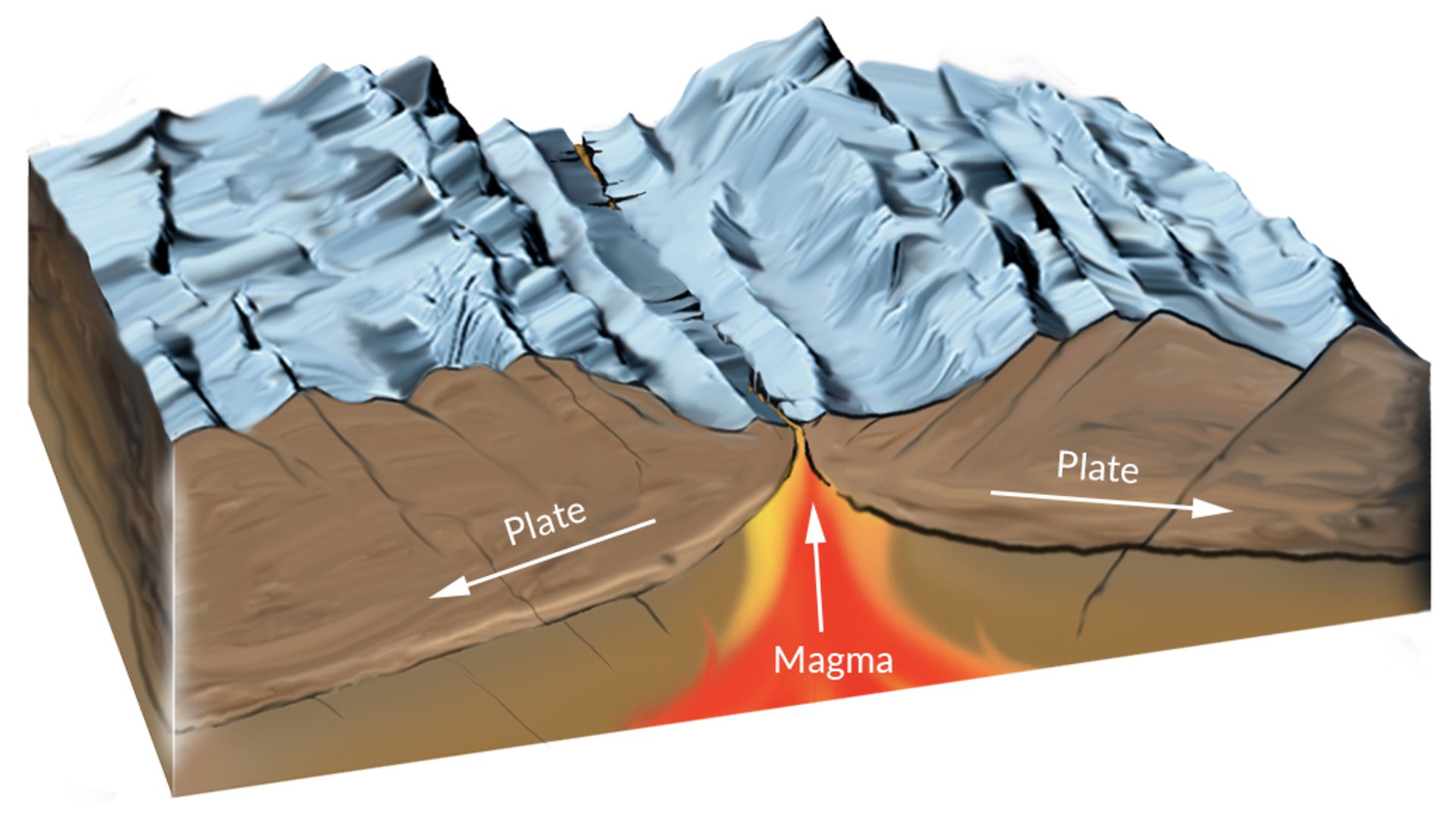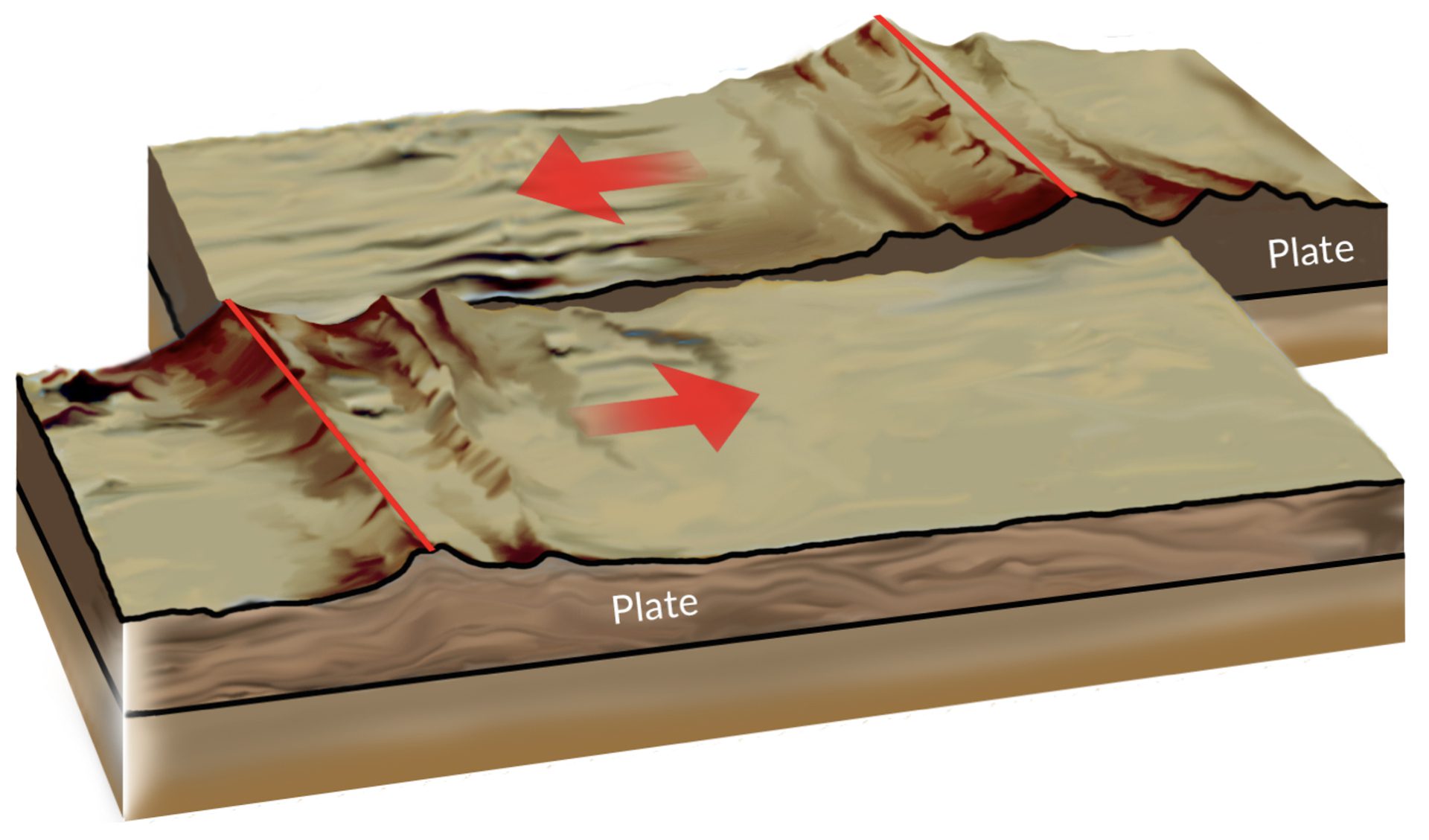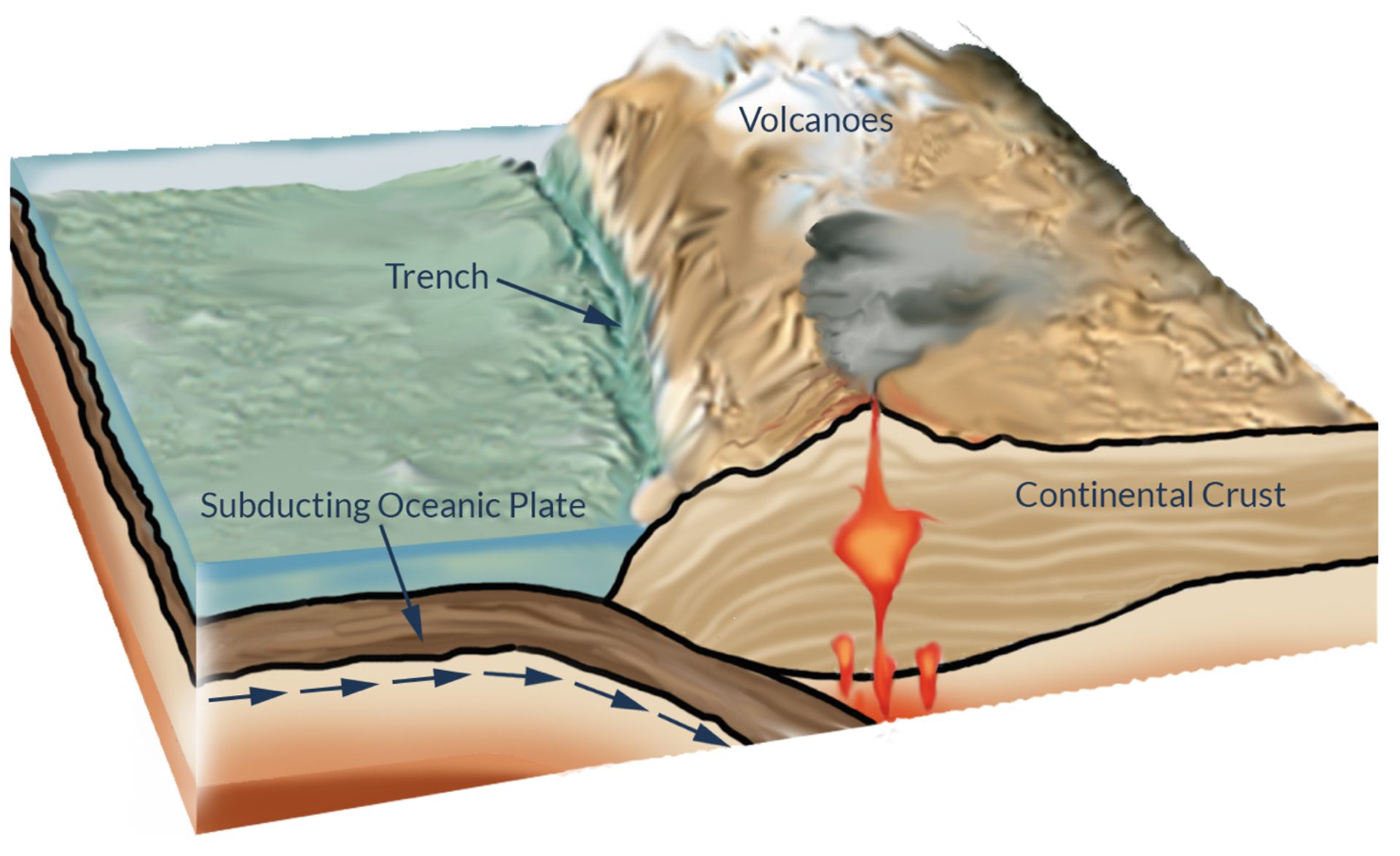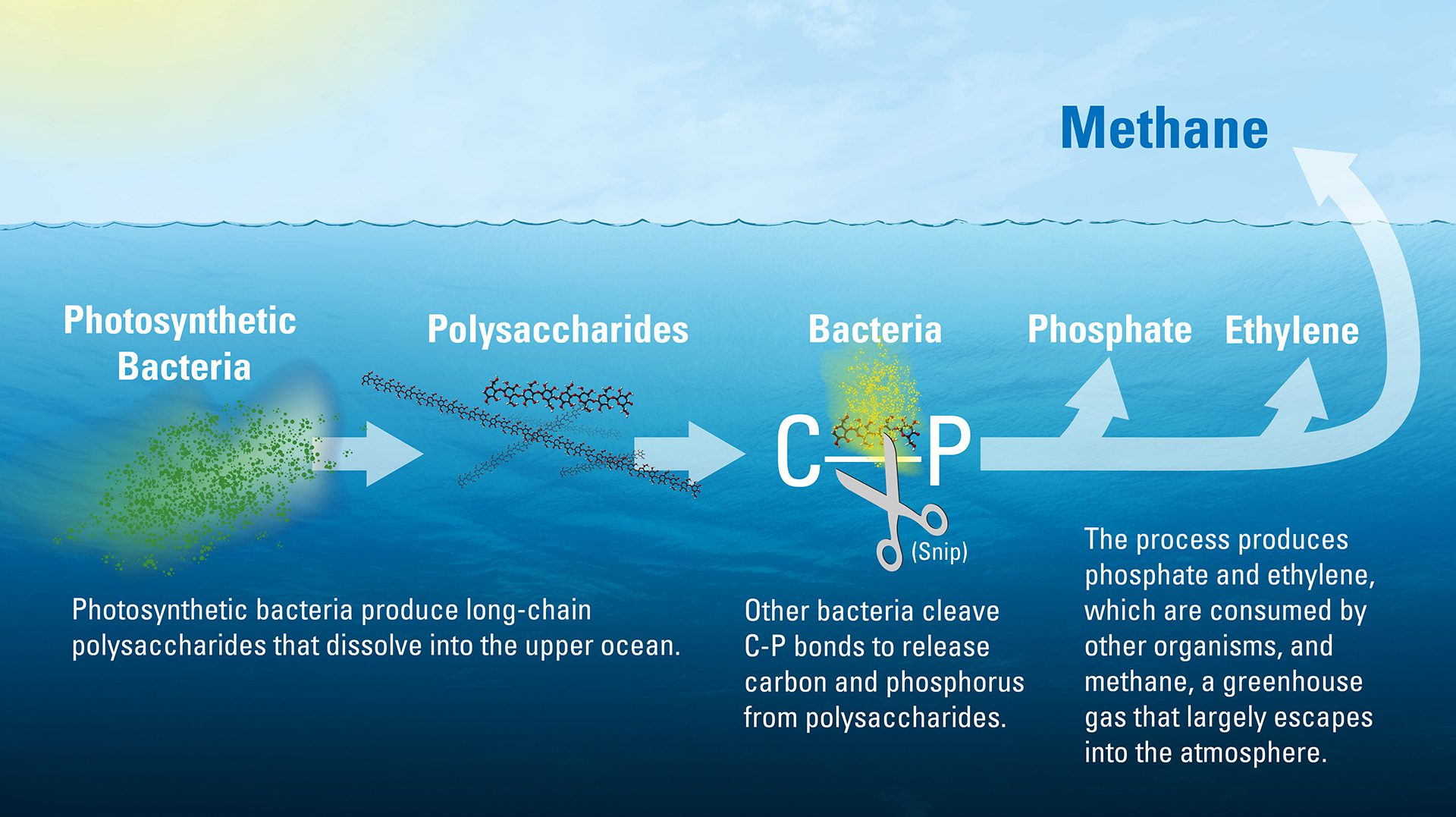Multimedia
Sea Level Falls and Rises relative to land
Ice sheets weigh down land, causing it to sink and edges to rise. When they melt, land rebounds and edges collapse, leading to a relative sea level rise.
Read MoreSeafloor topography at the Kermadec Trench
Ocean trenches form where one tectonic plate sinks beneath another, creating deep zones with volcanoes, quakes, and tsunamis—like Japan’s 2011 magnitude 9.0 quake.
Read MoreSection view of the different layers of Earth’s interior
At mid-ocean ridges, rising mantle rock melts as pressure drops, forming new seafloor. Scientists study its melting point to better model this crust-forming process.
Read MoreFjords, glaciers, and sea level rise
Researchers study how warming ocean waters in fjords like Sermilik drive glacial melt and ice flow, influencing sea level rise through shifting currents and water layers.
Read MoreOcean carbon cycle to twilight zone depth
The ocean is a significant carbon sink, absorbing a large amount of CO2 from the atmosphere. This process helps regulate Earth’s climate but can also lead to ocean acidification.
Read MoreDiatoms and Bacteria: A Complex Ocean Partnership
Diatoms and bacteria rely on each other for nutrients like organic carbon and B12 but compete for scarce iron, creating a delicate balance in ocean chemistry.
Read MoreHow Earth got its water
Water likely arrived in the inner solar system early on, flung by gravity from proto-Jupiter via meteorites, according to research on asteroid Vesta.
Read MoreMapping the seafloor with sound
Scientists use sound waves to map layers beneath the seafloor by measuring how long waves take to bounce back from sediments and crust.
Read MoreSources of oil pollution in the ocean
Roughly 380 million gallons of oil enter the ocean each year—most from human activities like shipping and runoff, with natural seeps also contributing.
Read MoreOne connected global ocean
Watercolored map of the global ocean in the Spilhaus projection with regional labels
Read MoreSunlight speeds polystyrene breakdown
Sunlight triggers photochemical reactions that break down polystyrene into CO? and organic carbon, revealing faster plastic degradation than once thought.
Read MoreSunlit, Twilight, and Midnight Zones in a cube
This cube shows the mesopelagic zone—an ocean layer from 1001000m deep—stretching from coastal EEZs to the high seas, including around island nations.
Read MoreThe Atlantic Meridional Overturning Circulation (AMOC)
Illustrated map of the AMOC, part of global thermohaline circulation, showing warm surface flow, deepwater currents, and key sinking and spreading sites.
Read MoreThe Earth’s water supply in perspective
If all Earth’s water formed a ball, it would be just 950 miles wide—and only a tiny fraction of it is fresh and accessible for human use.
Read MoreThe formation of 18° mode water
Cold winter winds cool warm ocean surfaces. The dense water left behind sinks, forming a distinct layer called 18° water between surface and deep seas.
Read MoreOpposing currents, Deep Western Boundary Current and Gulf Stream
Scientists use mathematical models of the Deep Western Boundary Current, Newfoundland’s topography, and the Gulf Stream to study what causes water to divert from the current.
Read MoreOriginal sketch of Titanic wreck site debris field
Hand drawn map of the wreck and surrounding debris field was created by the 1986 exploration team. Details were added to the map as the daily dives were completed.
Read MoreOTZ Mixing Pump and Migration Pump
Each night, millions of ocean animals migrate upward to feed, then descend at dawn, actively transporting carbon from surface waters to the deep in Earth’s largest animal migration.
Read MorePhotosynthesis process featuring its light and dark stages
To cope with fluctuating light levels, many phytoplankton have accessory pigments that can change structure and to send more or less energy to choloroplasts.
Read MorePlates Collide
When continents collide, crust buckles and forms mountain ranges like the Himalayas, which began rising 45 million years ago and still grow as plates push together today.
Read MorePlates Separate
Mid-ocean ridges and rift valleys form where tectonic plates spread apart, creating new ocean crust as molten rock rises, causing earthquakes and volcanic eruptions along the way.
Read MorePlates Slide
Transform faults form where plates slide past each other, causing powerful quakes. The San Andreas Fault between Pacific and North American Plates fuels major California earthquakes.
Read MorePlates Subduct
When ocean plates collide, one subducts beneath the other, forming trenches and causing molten rock to rise, creating volcanic mountains or island arcs like Japan or the Andes.
Read MoreProcess showing how methane is derived from photosynthetic bacteria
Scientists discovered that photosynthetic bacteria in surface waters produce sugar chains broken down by other bacteria, releasing methane—a new microbial source of this greenhouse gas.
Read More
